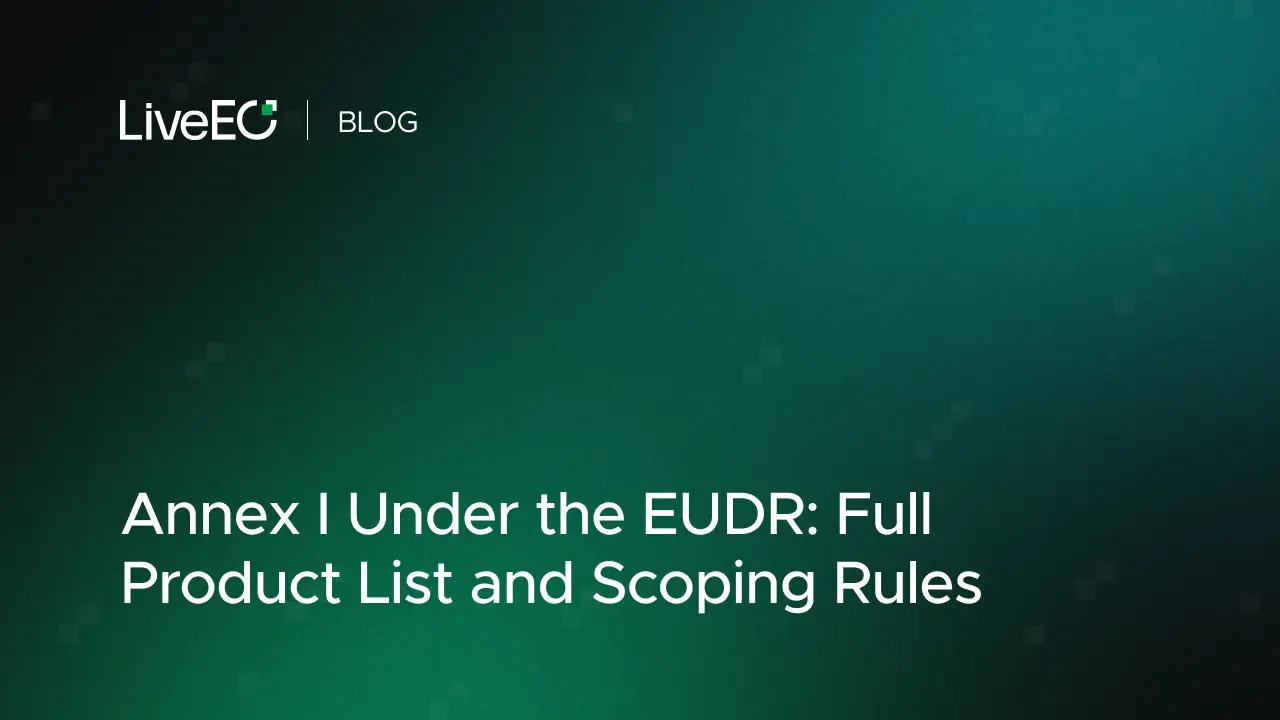The European Union Deforestation Regulation (EUDR) will undeniably have a ripple effect that reaches far beyond European borders.
Understanding these implications is critical for North American stakeholders, particularly within industries concerning regulatory compliance, agriculture, environmental sustainability, and supply chain traceability.
This guide aims to elucidate what does EUDR mean for North America, touching on the principles of EUDR in the USA and EUDR in Canada, to keep industry insiders informed.
The European Union Deforestation Regulation (EUDR) Explained
In response to the global concern of rampant deforestation contributing to climate change, the EU implemented EUDR, replacing Regulation 995/2010.
The EUDR reinforces the importance of green economic practices by promoting deforestation-free supply chains for certain commodities like wood, palm oil, soya, cocoa, coffee, and rubber.
This is achieved by leveraging geolocation data and validating deforestation-free evidence, particularly in cattle-rearing.
Historical Context of Deforestation
Historically, deforestation has been a pressing issue, with the world losing 129 million hectares of forests between 1990 and 2015, according to the Food and Agriculture Organization.
Such rampant deforestation has resulted in alarming biodiversity loss, disrupted local climates, and amplified global warming.
The European Union's proactive stance through the EUDR is in many ways a response to this global ecological crisis, emphasizing the shared responsibility of nations across the world.
EUDR in North America: What Does This Mean?
In a nutshell, what does EUDR mean for North America pivots around accountability and compliance.
Companies in the USA and Canada trading with the EU are now required to adhere to these new regulations.
This means demonstrating due diligence in ensuring their products are deforestation-free. With EUDR in USA and EUDR in Canada, the expectation for companies is to closely audit their supply chains, track their products back to the source, and confirm they don’t contribute to deforestation.
North America's Trade Relationship with the EU
The European Union is one of North America's largest trading partners. In 2020, the EU was the USA's third-largest goods trading partner and Canada's second-largest.
Given this significant trade volume, any regulatory changes within the EU can have substantial repercussions for North American industries. This intertwined economic relationship underscores the importance of understanding and adapting to the EUDR.
{{inline}}
The Impact of EUDR on the North American Market
Enforcing EUDR in Canada and the USA indicates potential shifts in trade practices.
Companies may need to review and revise their supply chains – a potentially costly and time-consuming endeavor.
However, on a positive note, the EUDR could foster a broader emphasis on sustainability amongst North American businesses, aligning them more closely with global environmental goals.
Consumer Sentiment on Sustainability
Beyond regulatory compliance, there's a rising consumer sentiment in North America that favors sustainable and ethically sourced products.
A recent survey indicated that over 50% of North American consumers are willing to pay more for products that ensure environmental sustainability.
This consumer shift, coupled with the EUDR's regulations, emphasizes the dual benefit for companies to align with eco-friendly practices — both for market access and consumer preference.
Key implications include:
- Increased traceability across supply chains: North American companies dealing with listed commodities must employ comprehensive tracking mechanisms ensuring complete transparency and accountability.
- Shifts in preferred trading partners: Companies may choose to partner more with suppliers in low-deforestation risk countries, driving changes in foreign trade dynamics.
- Greater focus on sustainability: North American businesses may further integrate sustainability practices to comply with EUDR and meet market demand.
Harnessing Technology for EUDR Compliance
As the EUDR demands comprehensive audits and supply chain transparency, it's critical for North American companies to leverage technology.
Geospatial analytics platforms like LiveEO can support this by providing detailed geolocation data, detecting deforestation activities, and assessing land use alterations. Essentially, tools like this can streamline the process of achieving and proving EUDR compliance.
Conclusion
The EUDR may be an EU regulation, but its ripple effects will impact the global market, forcing a reconsideration of practices and strategies in North America.
This could pose new challenges for businesses in the USA and Canada in terms of ensuring supply chain transparency and deforestation-free products.
However, with the right tools and proactive adaptations, these challenges can be transformed into opportunities for alignment with broader ecological goals.
As we watch the EUDR unfold, North American companies stand to benefit immensely from staying informed and prepared.








